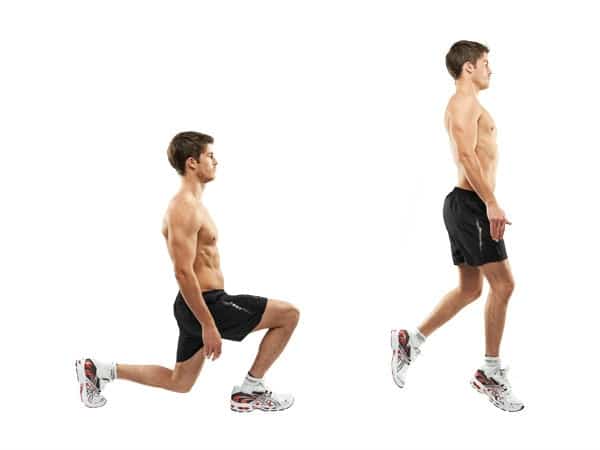If you want to improve your skeletal muscle, strength, and endurance, then one surefire way to do so is to engage in resistance training.
If you are beginning resistance training for the first time, you may want to peruse this article for information on the basic principles of resistance training, how to start strength resistance training, and the health benefits that you can derive from resistance training workout.
Basic Principles of Resistance Training
There are basically four fundamental principles of strength resistance training, and these are:
- Resistance Training Overload,
- Incremental Progressive in Resistance Training,
- Resistance Training Exercise Arrangement, and
- Movement Pattern Mastery for Optimal Real-time Execution.
#1. Resistance Training Overload
A resistance training overload simply means engaging in specific exercises with a whole lot more resistance than may be normally required.
However, the amount of overload that you need to put into your exercises will be influenced by your bodybuilding goal.
If you want to improve the strength of your skeletal muscles, then you should seriously consider engaging in resistance overload training.
#2. Incremental Progressive in Resistance Training
With an incremental progress in resistance training, you gradually increase the resistance on your initial overload as it becomes much easier to execute.
You increase the resistance on an initial overload when you are fatigued from the repetition (reps) on a specific exercise.
So for example, if you are able to do 20 reps of an exercise before getting fatigued, you can add resistance to the overload which reduces your repetitions on the exercise to say 10 to 12 reps.

#3. Resistance Training Exercise Arrangement
When it comes to resistance training, you need to arrange the exercises that make up your workout sessions in a way that you are able to train your larger skeletal muscle groups first before you train smaller skeletal muscle groups.
Also, you need to arrange your exercises in such a way that the successive exercises you engage in do not train similar skeletal muscle groups.
So if for example you are training your legs muscles, you need to first train the larger muscle groups like your adductor, glutes, hamstrings, and quadriceps before training the smaller muscles of your leg like your calves and plantaris.
#4. Movement Pattern Mastery for Optimal Real-time Execution
To develop skeletal muscle strength, you need not only target specific muscle groups to train, but also master the movement patterns involved in your exercise as it relates to your specific bodybuilding and performance-enhancing goal.
In other words, if your strength training is designed to improve your arm strength for a sport like weightlifting, then each movement pattern for your exercise(s) should replicate your movement pattern when lifting weights in a competitive weightlifting event for example.
This way, you build up strength in your major and minor arm muscles to enable you to execute your weightlifting in the safest possible way and with better confidence knowing that you have more or less rehearsed the execution during your training sessions.
How to Get Started With Resistance Training?
Beginning resistance training can be difficult if you do not make a concerted effort to plan your resistance training towards meeting your bodybuilding goals.
The first thing you need to do before you hit the gym and start lifting weights is to decide within yourself that this is what you want to do.
Once you have made a personal commitment to engage on strength training, then you can now comfortably go ahead with the following;
#1. Seek Expert Advice
You need to seek the expert advice of an experienced bodybuilder who would act as a mentor to you and get you started on the basics of resistance training, the exercises for your workout regimen, gym equipment, weightlifting form, strength training diet, and so on.
#2. Formulate a Resistance Training Program
Before beginning resistance training, you need to have a training program drawn up. This program serves as a guide to ensure that you are on the right path towards achieving your bodybuilding goal(s) through strength training.
The program highlights the steps you intend to take through strength training in improving your overall performance while building muscle mass and strength.
Your mentor can help you in drawing up a program which will also consist of a nutrition plan to match your resistance training as well as the appropriate rest days for recovery.

#3. Stay Committed
The only way you will succeed in your resistance training is to stay committed to the process. You need to be diligent and stick with the requirements of your formulated program.
The only way this will be possible is for you to develop the habit of staying true to a routine of training hard, eating clean, and resting well in accordance with the details contained in your program.
#4. Warm ups are Essential
Before you start any strength training session, you need to first take time out to warm up your skeletal muscles.
Dynamic warm-ups and stretches are preferable as they subject your body to a full range of movements. Warm up exercises like bodyweight squats, walking lunges, and pushups are worth trying out.
#5. Keep a Training Log
The one way you can stay focused and be on point with your training and nutrition is to keep a log book. This serves as a reference point for you to track your training sessions and diet while also providing a means of reflection on what you are doing right or what you aren’t doing well as a beginner. Your log book can be digital or you can go old school with a pen and notepad.
Health Benefits of Resistance Training
There are several health benefits that you can derive from resistance training. Here are a few worth noting;
#1. Building Skeletal Muscle Tissue
As you engage in resistance training, you work your large and small muscle groups to promote growth and sustenance of muscle mass. Whenever you lift heavy, you will experience miniscule muscle tears that heal on your rest days and with the healing comes muscle growth.
#2. Improved Skeletal Muscle Strength
Resistance training will help enhance your skeletal muscle strength. As you build on your original overload with increased resistance, your muscles tend to adjust to the workload which then builds up your strength.

#3. Enhanced Bone Structure
Weight training is capable of improving the density and strength of your bone structure which helps you in lifting heavy and avoiding bone-related injuries.
#4. Shedding of Body Fat
Strength training can increase your metabolism and trigger a process of thermogenesis that subsequently causes the sporadic heating and cooling down of your body leading to lipolysis (fat burning) of both visceral and subcutaneous body fat.
#5. Lower Risk of Training-related Injuries
Strength training will reduce your risk of minor and major injuries by providing you with muscle building, bone strengthening, and performance-enhancing gains. By observing your rest days and maintaining a clean diet, you will also recover quickly from injuries if and when they do arise.
Some Tips on Resistance Training Exercises
Here are a few tips you can take to heart before beginning resistance training today:
- Warm-ups are necessary before any main workout session, so make sure you engage a full range of motions with general warm-ups and dynamic stretches.
- Make sure you learn the proper technique and form necessary for lifting the different weights needed in your training program.
- Make sure you have a log book and you keep track of your training while taking notes of your training and nutrition on a daily basis.
- Observe your rest days as they are essential for recovery from minor wear and tears of muscle tissue leading to muscle growth.
- Don’t use gym equipment without first learning about how to use it properly, as it could be risky to do so.
- Safety comes first at all times. If you don’t feel up to any training day, even though it is scheduled according to your program, you should take time off. This way, you avoid injuries and you keep the fun factor in your training which is what its all about.

Conclusion
Resistance training is one way to keep you fit and healthy, but safety is also essential to avoid injuries. To this end, you are advised to seek the guidance of a qualified bodybuilding coach and you can get free coaching right here.
Beginning resistance training on the right note is very important and having a mentor to see you through will help keep you grounded.


